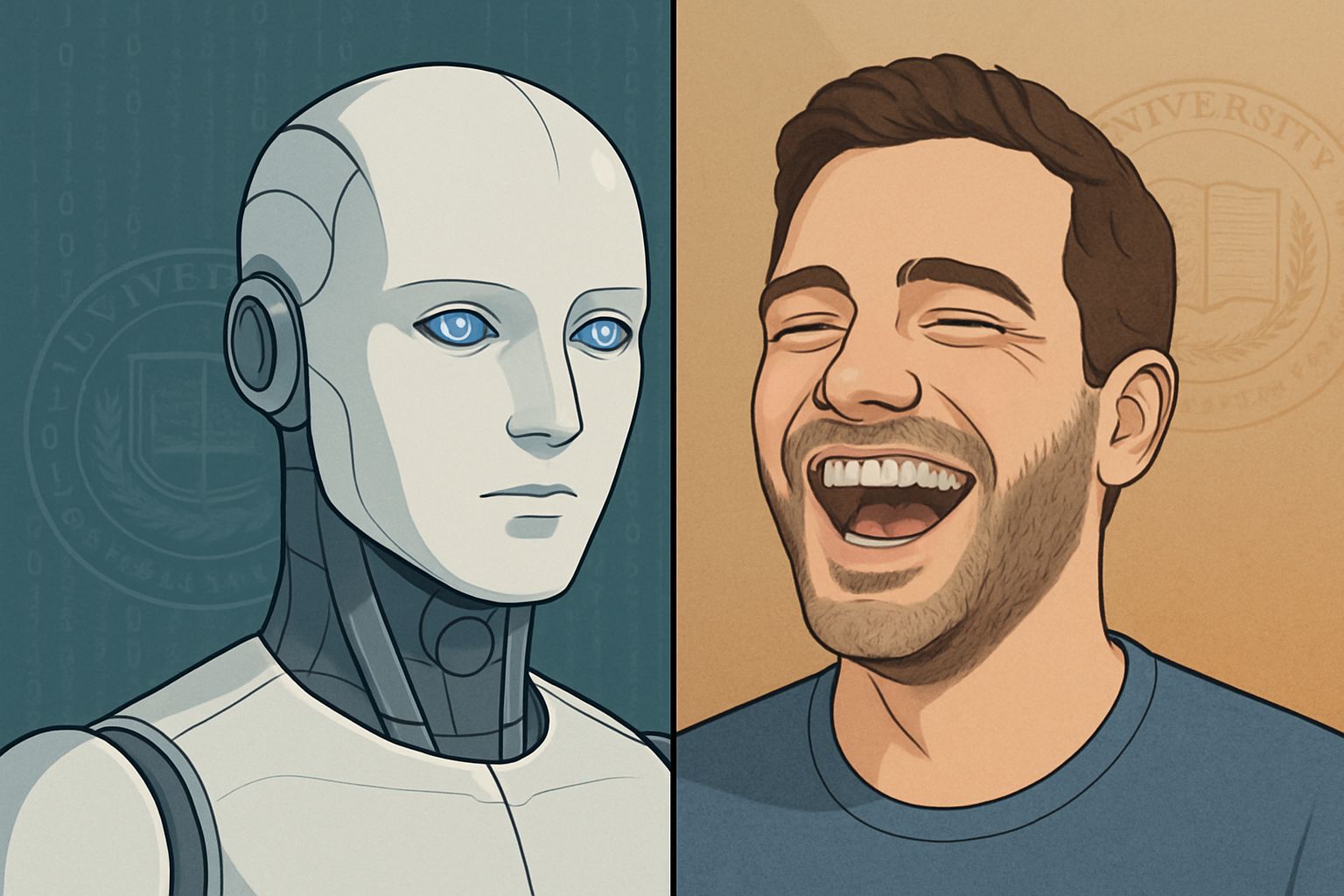
AI CERTS
1 day ago
Cardiff Study Shows LLM Limitations With Puns
The paper, “Pun Unintended,” tests popular models including GPT-4o, Qwen2.5, and Llama3. Accuracy plummets when puns are tweaked, dropping near chance level. Meanwhile, humans keep laughing because they grasp the Double Meaning. Such failures expose gaps in Semantic Understanding that pure token statistics cannot bridge. Therefore, industry leaders must examine whether semantic understanding truly exists inside today’s black boxes.
Core LLM Limitations Exposed
Cardiff and Ca’ Foscari scientists built two new datasets, PunnyPattern and PunBreak, to stress test pun detection. Furthermore, they refined older SemEval material to remove leakage. Results uncovered structural LLM Limitations that ordinary benchmarks missed. On PunnyPattern, average accuracy fell to 15 percent. In contrast, baseline tasks had scored 83 percent. Models relied on memorized templates rather than phonetic signals. Consequently, even minor word swaps destroyed predictions.

These failures appeared across seven instruction-tuned systems. GPT-4o led the pack yet still stumbled whenever puns were distorted. Moreover, weaker models like Mistral3 collapsed on homophone changes, hitting 33 percent accuracy. Overconfidence worsened matters; systems labeled nonsense as humor with high probability.
Overall, the experiments demonstrate that tokenization and statistical cues dominate current approaches. Therefore, deeper phonological modeling is essential for robust joke comprehension.
These data underline crucial weaknesses. However, the next section details the study’s specific numbers.
Cardiff Study Key Findings
The authors quantified performance using three complementary tasks: detection, pair identification, and rationale generation. Additionally, they introduced Pun Pair Agreement, a novel metric scoring 0–2 points. Numbers speak loudly here.
Hard Numbers Explained Clearly
- Baseline pun detection accuracy: 0.83 on cleaned SemEval subsets.
- PunnyPattern accuracy: 0.15 across seven models.
- PunBreak accuracy: 0.50 overall, yet 0.33 on homophone subsets.
- Lowest unfamiliar pun success: 0.20, far below random guessing.
- Top performer: GPT-4o, still fragile on altered jokes.
Despite varied architectures, every system shared core LLM Limitations. Moreover, the Humor Gap widened whenever sentences lost surface symmetry. Explanations often hallucinated nonexistent phonetics, revealing brittle Semantic Understanding.
These metrics highlight the Double Meaning blind spot. Consequently, creative professionals must remain cautious when delegating punchline tasks.
Numbers alone lack context. Therefore, the following section explores why models consistently miss the joke.
Why Models Miss Humor
Understanding puns demands phonology, pragmatics, and cultural context. However, token-based training compresses pronunciation clues into subword fragments. Tokenization therefore masks homophones, weakening Semantic Understanding. In contrast, humans map sounds to concepts effortlessly.
The study identifies three failure drivers. First, models chase statistical shortcuts, matching known pun skeletons without verifying logical fit. Second, alignment tuning encourages confident answers, producing elaborate yet false rationales. Third, narrow training omits prosodic or auditory features essential for Double Meaning recognition.
Furthermore, pattern overfitting widens the Humor Gap whenever jokes deviate from memorized scripts. Consequently, LLM Limitations become glaring during creative rewriting, localization, or multilingual campaigns.
This mechanism overview sets the stage for practical implications. Nevertheless, stakeholders need to weigh business risks before deploying humor-aware chatbots.
Industry Implications And Risks
Marketing teams increasingly rely on chat assistants for catchy taglines. Yet the documented LLM Limitations threaten brand voice when jokes backfire. Moreover, automated translation tools can miss culturally specific Double Meaning, causing awkward slogans.
Creative industries are not alone. Legal drafting, educational content, and customer support may misinterpret nuanced humor or sarcasm. Consequently, this gap erodes user trust and amplifies liability exposure.
Vendors can mitigate danger through rigorous validation pipelines. Additionally, multimodal prompts that incorporate audio examples improve humor reasoning in early prototypes. However, no production system currently guarantees pun robustness.
Business leaders now face a choice. They can restrict humor tasks or invest in research partnerships that tackle core limitations.
Risks emphasize the need for solutions. Subsequently, the next section reviews emerging technical pathways.
Paths Toward Better Understanding
Researchers propose several complementary fixes. First, phonological embeddings could encode rhyme and stress directly. Therefore, models would better detect Double Meaning based on sound overlap. Second, multimodal learning pairs text with speech, as shown by the 2024 multimodal humor paper.
Third, dataset diversification across languages and lengths broadens Semantic Understanding. Moreover, audience-aware alignment might preserve edgy humor without violating safety. Finally, prompt engineering with rationale templates slightly boosts precision yet cannot solve underlying LLM Limitations alone.
Future evaluation should prioritize robustness suites like PunnyPattern. Consequently, iterative benchmarking will reveal genuine progress rather than inflated scores.
These potential solutions inspire optimism. In contrast, successful implementation requires skilled professionals ready to guide the transition.
Strengthening Professional Skill Sets
Technical teams must stay ahead of emerging evaluation protocols. Moreover, specialised training sharpens insight into LLM Limitations and their mitigation. Professionals can enhance their expertise with the AI+ Data Robotics™ certification. The program covers advanced dataset curation, phonological modeling, and risk assessment.
Additionally, cross-functional workshops help marketers appreciate Double Meaning pitfalls before campaigns launch. Consequently, collaboration between linguists and engineers closes crucial gaps from multiple angles.
Continued education nurtures deeper Semantic Understanding among human practitioners. Therefore, organisations gain confidence when deploying AI in creative settings.
Skill development sets a solid foundation. Therefore, we can now summarise key insights and outline next steps.
Conclusion And Next Steps
The Cardiff research offers a stark reminder of persistent LLM Limitations. Moreover, their datasets reveal how easily statistical models break when creativity shifts. Consequently, stakeholders cannot assume robust humor handling without focused validation.
However, targeted fixes are emerging. Phonological embeddings, multimodal prompts, and diversified corpora promise deeper Semantic Understanding. Such strategies directly confront these constraints while enhancing user trust.
Addressing LLM Limitations demands cross-disciplinary effort. Ignoring persistent LLM Limitations will erode competitive advantage. In summary, organisations should audit humor workflows, adopt new robustness tests, and monitor advances that close the Humor Gap.
Ready to deepen expertise and steer responsible innovation? Enroll today in the AI+ Data Robotics™ program and lead futureproof AI projects.



